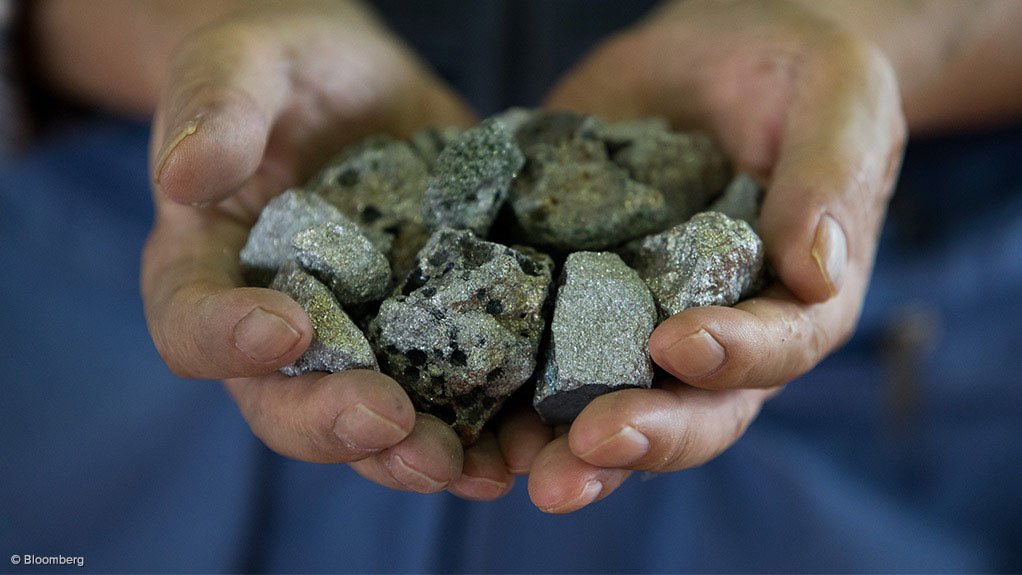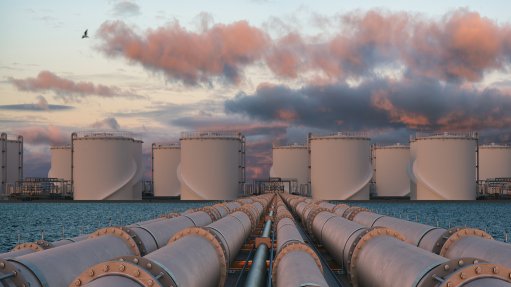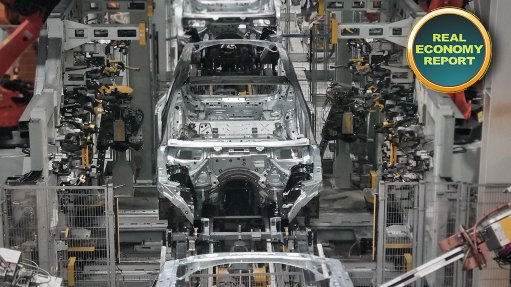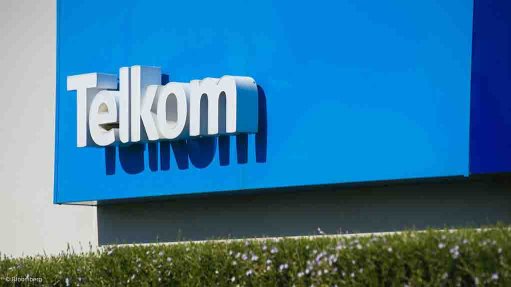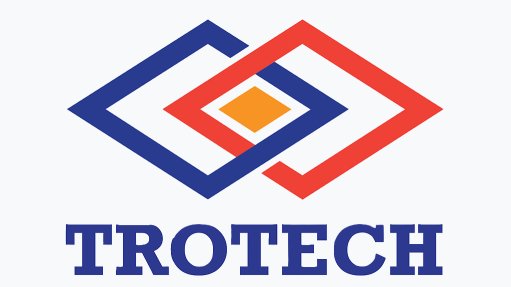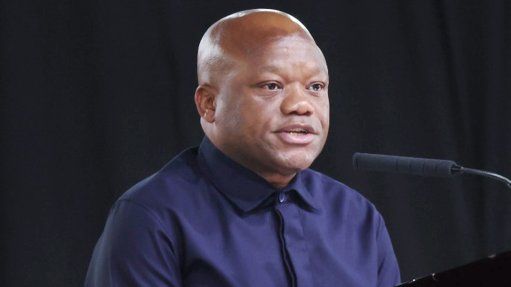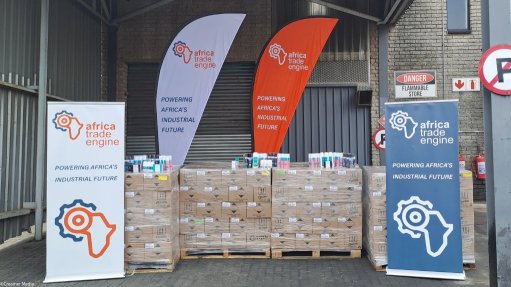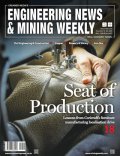Working group has been established to extend ferrochrome's horizon, Minister reports
JOHANNESBURG (miningweekly.com) – A working group with industry has been established to improve the operating environment for long-term sustainability of South Africa’s ferrochrome industry, Trade, Industry and Competition Minister Parks Tau has reported in an article in Business Day, which has been published at a time when the testing of highly convincing new home-grown smelting technology is well advanced.
The Proudly South African SmeltDirect is said to have the potential to re-establish South Africa as the global ferrochrome hub that it once was – and a more environment-friendly one at that.
SmeltDirect is characterised by chemical reactions rather than large electricity volumes and can be retrofitted to the many existing ferrochrome smelters now on care and maintenance owing to high electricity tariffs.
“It’s not a time for retreat but for reinvention,” Tau wrote, while also reiterating that chrome is exempt from the new US tariff structure.
In March, pilot testing of the new smelt technology was said to be “looking great” and its commercialisation prospects will likely be known by the end of next month.
It has to be emphasised that South Africa hosts more than 70% of the world reserves of chrome ore and was dominant in ferrochrome production until 2010.
In the early 2000s, South Africa was the undisputed No 1 chrome ore- and ferrochrome-producing country, with 90% of the inputs, including technology and equipment, locally sourced.
More than 200 000 direct and indirect jobs were created across the chrome value chain and 20% of mining-related foreign exchange was earned from ferrochrome sales.
In 2010, the chrome value chain contributed R42-billion to South Africa’s GDP and generated R36-billion worth of foreign exchange earnings, with ferrochrome production contributing 80% of the value of the chrome value chain.
Ferrochrome is a key ingredient of stainless steel, which is environmentally friendlier that carbon steel because of its long life.
Interestingly, South Africa is the largest producer of titanium-bearing stainless steel outside of China and Europe, whereas the US produces nickel-bearing stainless steel.
South Africa’s titanium-bearing stainless steel is used in the automotive catalytic converters that South Africa manufactures in Gqeberha, which Tau quotes naamsa | The Automotive Business Council as saying represent this country’s largest automotive component export.
From 2018 to 2022, South Africa exported R14.1-billion to R23.9-billion worth of catalytic converters to mainly the EU and the UK, which despite the current turmoil in global trade, remain reliable trading partners, the Minister pointed out.
The vehicle exhaust emission control devices convert toxic gases and pollutants in exhaust gas from an internal combustion engine.
The first widespread introduction of catalytic converters, which prevent air pollution, was in the US automobile market, dating back to 1975.
These auto catalytic converters use South Africa’s platinum group metals (PGMs), which are also not subject to the new US tariffs and which Tau urged should be re-imagined into alternative applications, particularly in emerging clean energy technologies.
“There’s a need to adapt to a shifting global paradigm and the transformative potential of green hydrogen, to unlock economic growth,” the Minister wrote.
New applications are constantly being found for PGMs, which are the biggest employer of South Africa’s mineworkers.
As last month’s PGM Industry Day heard, the PGM ruthenium, for instance, is unlikely to be able to continue to hide its light under a bushel. It is now seen to have a bright future in green hydrogen, green chemistry and electronics.
Tau placed great emphasis on the need for South Africa to adapt to the shifting global paradigm and the transformative potential it is bringing for green hydrogen and its transported derivative green ammonia to unlock economic growth.
This follows European Commission President Ursula von der Leyen urging South Africa to do just that and reports such as this one constantly coming out of countries such as Germany: “While we may not (yet) have a dedicated Minister for Hydrogen in Germany, we are well on our way to anchoring this versatile molecule and its growing relevance firmly in the minds and actions of political decision-makers. Most importantly, we’re showing how many industries (such as chemicals) are already involved in hydrogen. It’s no longer a topic reserved for the hydrogen-savvy few. It’s becoming an everyday reality. Our mission is to help defossilise daily life for everyone,” stated Hydrogen Product-Market-Fit’s Silke Frank.
In Australia, iron-ore mining company Fortescue has signed an agreement with Bocimar, part of Belgium’s CMB.TECH, to charter a new vessel powered by green hydrogen-derived green ammonia.
The 210 000 dry weight ton Newcastle max vessel is expected to be delivered by the end of 2025 and will transport Fortescue’s iron-ore exports from the Pilbara to customers in China.
Fortescue, which has positioned itself as a zero-emission advocate, is calling for the direct adoption of green ammonia as a long-term marine fuel and opposing transitional alternatives such as biofuels and liquefied natural gas.
In Oman, a development agreement has been signed to create the world’s first liquid hydrogen import corridor between Oman, Holland and Germany, the Port of Amsterdam announced on April 17.
The corridor will connect the Port of Duqm in Oman, the Port of Amsterdam and German logistics hubs, including the Port of Duisburg.
The agreement is a step towards delivering large-scale green hydrogen volumes from Oman to Europe by 2029.
In France, green hydrogen producer Lhyfe has announced that a €149-million grant has been confirmed for the green hydrogen production plant it is developing near the Grand Canal of Le Havre. The 34 t/d project was selected in 2022 by the European Commission.
In the US, Plug Power and Olin Corporation flipped the switch on a new hydrogen liquefaction plant. By adding this capability, Plug Power is building out the full supply chain, moving one step closer to delivering liquid hydrogen for mobility and even off-grid power systems.
World Platinum Investment Council quotes Airbus Future Programmes head Bruno Fichefeux as saying: “Fully electric aircraft powered by hydrogen fuel cells have the potential to revolutionise air transport, complementing the sustainable aviation fuel pathway.”
Airbus has reaffirmed its commitment to hydrogen-powered aviation by unveiling a new concept aircraft powered by fuel cell technology.
The aerospace giant is advancing its research into hydrogen propulsion as a viable solution for decarbonising commercial aviation, with plans to introduce a next-generation single-aisle aircraft in the latter half of the 2030s.
South Africa-linked AP Ventures’ Charlotte Downie and Caelin Palmer comment that China, Japan and Germany are pressing ahead with hydrogen, particularly in transport and industrial applications, and that hydrogen for short-haul air travel is gaining traction.
All over, platinum is helping to improve air quality and achieve decarbonisation goals. It is at the forefront of hydrogen fuel cell technology, powering zero-emissions fuel cell electric vehicles and also researching and developing a use in battery electric vehicles.
Right here in South Africa, right now, automotive catalytic converters continue to be in demand for internal combustion engine exhaust systems and it must be highlighted that these locally produced autocatalysts are made from argon-super-intensive titanium stainless steel – titanium-stainless without nickel but with local ferrochrome.
Moreover, South Africa as a whole must go all out to plead for its largest export auto component to be tariff-free once again and for local ferrochrome to be given every backing to win back some of its lost global ground.
Article Enquiry
Email Article
Save Article
Feedback
To advertise email advertising@creamermedia.co.za or click here
Comments
Press Office
Announcements
What's On
Subscribe to improve your user experience...
Option 1 (equivalent of R125 a month):
Receive a weekly copy of Creamer Media's Engineering News & Mining Weekly magazine
(print copy for those in South Africa and e-magazine for those outside of South Africa)
Receive daily email newsletters
Access to full search results
Access archive of magazine back copies
Access to Projects in Progress
Access to ONE Research Report of your choice in PDF format
Option 2 (equivalent of R375 a month):
All benefits from Option 1
PLUS
Access to Creamer Media's Research Channel Africa for ALL Research Reports, in PDF format, on various industrial and mining sectors
including Electricity; Water; Energy Transition; Hydrogen; Roads, Rail and Ports; Coal; Gold; Platinum; Battery Metals; etc.
Already a subscriber?
Forgotten your password?
Receive weekly copy of Creamer Media's Engineering News & Mining Weekly magazine (print copy for those in South Africa and e-magazine for those outside of South Africa)
➕
Recieve daily email newsletters
➕
Access to full search results
➕
Access archive of magazine back copies
➕
Access to Projects in Progress
➕
Access to ONE Research Report of your choice in PDF format
RESEARCH CHANNEL AFRICA
R4500 (equivalent of R375 a month)
SUBSCRIBEAll benefits from Option 1
➕
Access to Creamer Media's Research Channel Africa for ALL Research Reports on various industrial and mining sectors, in PDF format, including on:
Electricity
➕
Water
➕
Energy Transition
➕
Hydrogen
➕
Roads, Rail and Ports
➕
Coal
➕
Gold
➕
Platinum
➕
Battery Metals
➕
etc.
Receive all benefits from Option 1 or Option 2 delivered to numerous people at your company
➕
Multiple User names and Passwords for simultaneous log-ins
➕
Intranet integration access to all in your organisation



